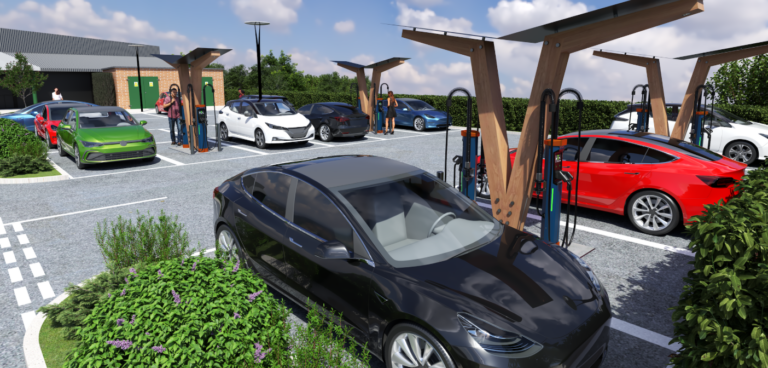Osprey Charging has today announced plans to install more than 150 high-powered EV charging hubs across the UK by 2025.
A total of 1,500 150-175kW rapid chargers will be installed across 10 sites located on strategic A-roads and adjacent to motorways.
The £75m rollout will also see new charger optimisation technology deployed publicly for the first time in the UK.
Kempower charging technology is designed to enable more locations to host multiple rapid chargers on a single site without adversely affecting charging power or requiring expensive grid connections.
Furthermore, the technology intelligently load balances to maximise the amount of charge each vehicle receives.
The physical footprint of each charger is also reduced by 74%, allowing space for more chargers, improved accessibility and reducing their visual impact to support planning permission.
Ian Johnston, CEO of Osprey Charging, said: “Through this rollout we will make charging anxiety a thing of the past.
“High-powered, multi-charger hubs will herald a new era of public EV charging – enabling mass EV adoption and a clean transport revolution.
“Our rollout of hubs across the country’s major transport routes will ensure drivers are supported with convenient, reliable, on-the-go charging, delivering the best possible consumer experience for UK motorists.”
Each rapid charger has been developed to be capable of adding 100 miles of range in 10 minutes and each hub will be located near food and drink amenities, allowing drivers to make use of facilities while they charge their car.
Osprey chargers are compatible with all rapid charging EVs currently on the market and do not require a membership or subscription to initiate charging. Instead, drivers will be able to tap their contactless bank card or smartphone.
Construction is currently underway at four sites and Osprey’s first hub will open next month in Wolverhampton, adjacent to the A463 near the M6.
Construction will commence on all of the first 10 hubs before the end of the year, with all 150+ hubs opening over the next four years.





